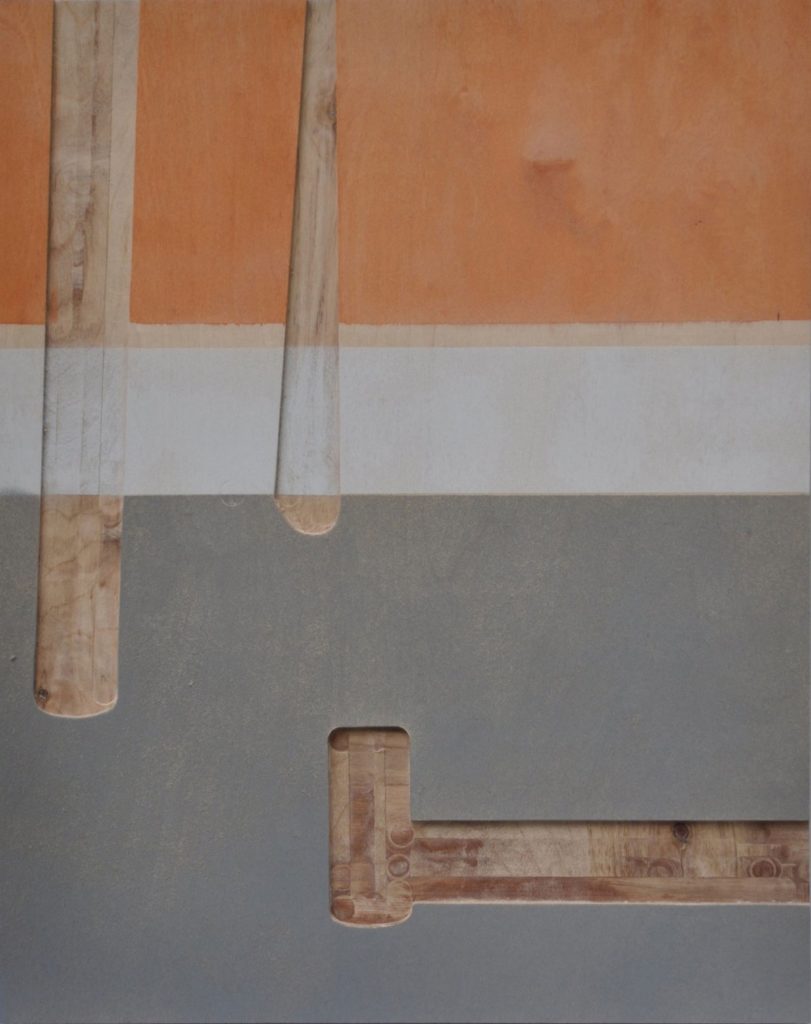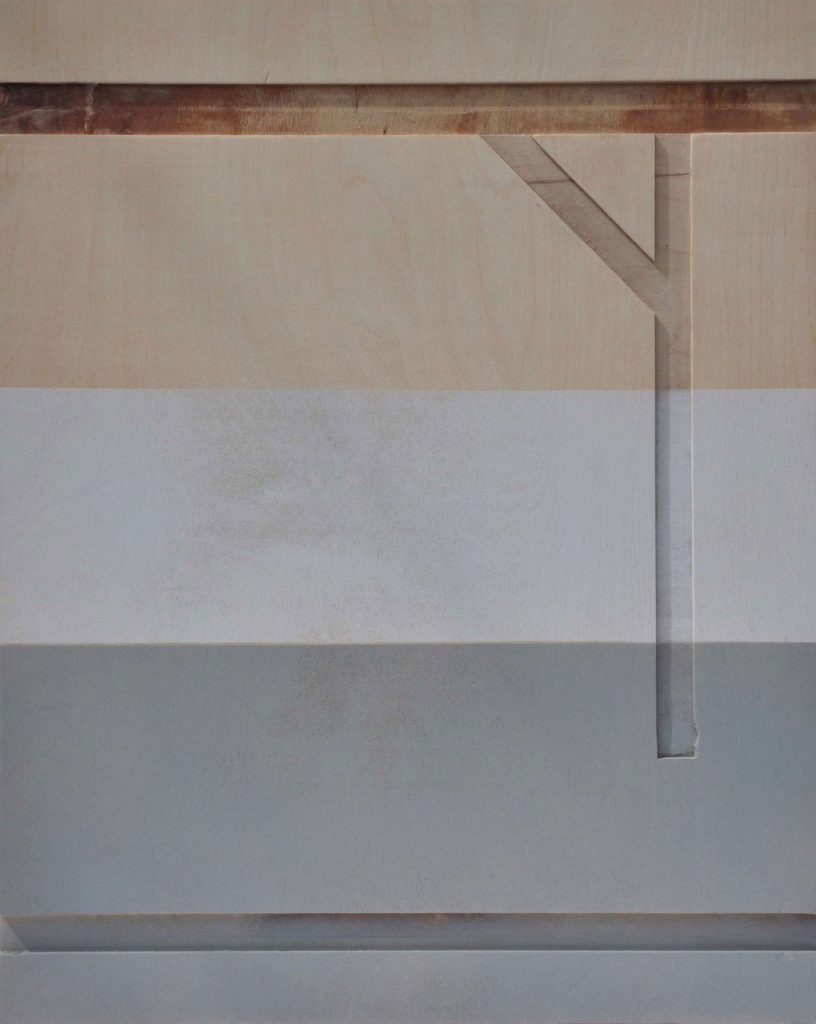Remembered Space
STUDIO WORKS BY CELIA SCOTT


A subtle and beguiling assemblage of recent works by Celia Scott is appropriately mounted on the plywood walls of the intimate Velorose Gallery, Charterhouse Square, London (13th April to 18th May 2018). Plywood, aluminium and carefully modulated surfaces that are revealed or obscured by spray paint are the stuff of these reflections on the niceties of modernist architecture and memories of spaces past. Within the predominantly oblong or square formats of plywood reliefs, prints and paintings, Scott lovingly investigates fine distinctions of proportionality, scale, relief and texture. For example, in Object-Space VI, 2015 (possibly the forerunner of the relief series) she contrasts the shape, length and angle of two gouged out ‘gutters’, slightly off the vertical, which are neither parallel to each other nor to the edge of the plywood sandwich. They are held in place by the comforting order of the division of the painted surface: a rubbed red-ochre rectangle revealing the grain of the ply which abuts on the carved indents, and a narrow pale grey band that paints them into place. The bottom grey partition hosts a deeper horizontal T-shape, sanded to reveal the structure of the composition board below its skin. In a variant, Object-Space VIII, 2018, the three-part division of beige and grey scored with two shadowed gutters reads as a vertical plane rather than a horizontal plan view. The Y-shaped vertical ghost member that doesn’t quite reach the ground (or does it?) acts to disrupt the apparent formal resolution of this work, offering echoes of a gallows structure that either hangs from or supports the horizontal inverted moulding.

Within the formal modernist canon, it was only works on paper or canvas that were permitted to explore the dangerous suggestibility of perspective and spatial illusion that challenged the integrity of the frontal plane. So, appropriately, Celia Scott has produced a number of screenprints that play with transparency in blocks of colour that mask or reveal the bolder surface elements, while in the woodcuts she enlivens simple perspectives with the rubbed-down textures of wood grain that challenge or emphasise vertical and horizontal planes. Drawn lines are not added to these prints: rather the perspectival angles are left as negative margins revealing the base colour of the image, as in Threshold III, 2018. Print and woodblock therefore play an equal part in the process in a modest but satisfying act of reconciliation. In the paintings Tabula Rasa I and II, complex perspectives are played out in a clever palimpsest of contradictory impossibilities, suggesting planes that are simultaneously solid, transparent, forward or backward, two or three dimensional. The restricted palettes of these works, with touches of warmth shining through neutral tones on plywood and aluminium surfaces, add reassuring sobriety to these complex compositions.


This is an exhibition where the spectator can indulge in the sorts of aesthetic pleasures that are often denied us in the conceptual clever-cleverness and garishness of postmodernity. Scott’s memories of architectural spaces and places would be very pleasurable to live with.
